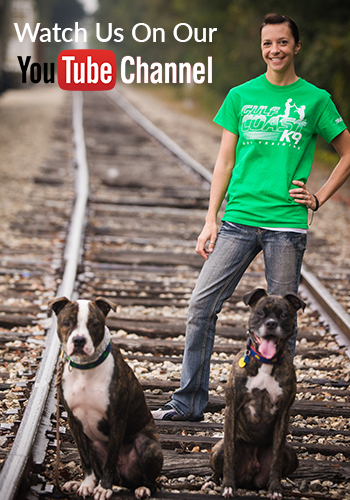It can be incredibly confusing to hear your dog whimper and whine when everything seems fine on the surface. While dogs don’t cry tears of sadness like humans, their vocalizations are packed with meaning. However, the species barrier means we can’t always decode these meanings without outside help. Is your dog crying, either in your presence or whenever you leave the home? If so, Gulf Coast K9 Dog Training can help.

Why Your Dog Might Be Crying
Before you can stop your dog from crying and make them more secure, you have to know why they are crying in the first place. Most often, dogs whine to express basic needs, especially if they are doing it in your presence. A cry from a newly adopted dog might mean they’re hungry, thirsty, or need to go outside but don’t feel you are providing for them. This doesn’t mean you are neglecting your dog, but it might mean they are uncomfortable eating or drinking in a new, unfamiliar environment.
However, chronic whining paired with other symptoms like limping or panting likely signals a deeper need. Some breeds might not cope well with the Florida heat, and it’s your job to make sure they feel cool during all parts of the year. Before looking deeper into your dog’s behavior, rule out immediate health concerns with your vet.
Another massive contributor to crying is anxiety, and many things can suddenly spike anxiety. For example, dogs with separation anxiety may whine excessively when you leave, even destroying furniture throughout the day. Some of this behavior can escalate, reaching the point where your dog cries anytime you leave their sight.
And while there are countless other reasons for crying, the final significant factor is that a bored dog is often a noisy dog. Without ample physical and mental stimulation, dogs may whine to beg for playtime, walks, or interaction. High-energy breeds and puppies are known to cry out for attention when they feel their social and physical needs aren’t being met. You should try to increase your interaction or find other ways to keep their attention, but never directly reward whining with treats or attention. Doing so leads to a negative feedback loop where crying is seen as the preferred way for your dog to get your attention.
Ways You Can Address Your Dog’s Crying
How you address your dog’s whining and crying issue will depend on the underlying cause. Work through this list and see which method helps your furry friend the most.
Rule Out Pain: Schedule a vet visit to rule out injuries if you believe whining and crying are associated with an actual health concern. Once cleared of immediate injuries, focus on routine to see if they address an unknown issue. Feed at consistent times, provide fresh water, offer regular potty breaks, and give them their own space to relax and retreat from the family. You might find that these simple changes address the issue before you even realize what the problem is.
Build Confidence: Some dogs need help feeling confident, safe, and secure when their family isn’t around. For separation anxiety, practice short departures of around 5 minutes and reward your dog if they maintain calm behavior until your return. Gradually increase time apart, pairing absences with distractions like their favorite toys and treats. Once they learn they can still enjoy their time alone, they are less likely to cry anytime you leave the house.
Use Positive Reinforcement: Remember, never reward demanding whines with attention or treats. Every time they start, wait for quiet before responding. Teach them a cue or phrase that indicates and praises when your dog pauses whining, then reward them with a treat or attention. They should learn that simpler forms of grabbing your attention are better than loud whines that wake up the neighborhood.
Some behaviors require professional support, especially if you cannot clearly understand why your dog is crying. Gulf Coast K9’s training programs immerse dogs in obedience training, socialization, and real-world distraction-proofing to help them become their best selves. If you would like to learn more about how these programs can assist your dog who cries, contact our team today.




